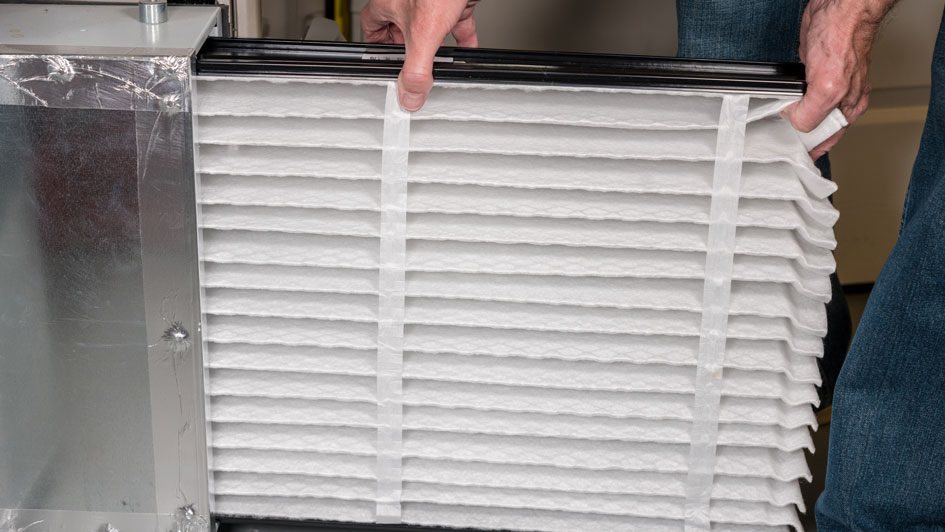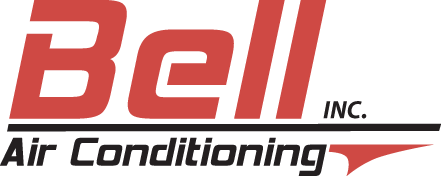
Selecting the ideal furnace filter and changing it when it is dirty is as important to your HVAC system as changing the oil is to your car. Each plays a critical role in keeping its system running safely, efficiently and for a long time.
A dirty furnace filter loses its effectiveness, permitting potentially harmful particles to circulate through your home. It also restricts airflow, which can damage your furnace and decrease its life span.
Ensuring your furnace uses a clean filter that is suitable for your needs is not just about keeping your furnace working efficiently. It’s also about delivering healthy indoor air quality for your home.
The health of your family is important to the heating and cooling professionals at Bell Air Conditioning Inc. We've long worked with an eye on improving indoor air quality in Temple/Belton . Here, we’ve answered frequent questions about HVAC filters, including that especially tricky question of what direction do you point a filter in your furnace or air conditioner?
When to Replace the Air Filter in Your Furnace
It is vital to replace dirty air filters in a furnace or air conditioner routinely. Dirt-clogged filters cause the system to worker harder than it should because it takes extra effort to pull air through the plugged-up filter.
Officials recommend examining your furnace filter monthly and replacing it if it’s dirty. You’ll know if your filter needs changing because it will filled with dirt or dust. Homeowners who have dogs and cats will likely have to replace their furnace air filter more often, because a quality air filter will trap pet hair circulating in a home.
Where Is the Air Filter in My Furnace?
In general, a furnace air filter is normally found in the return air duct or blower compartment before the return air reaches the furnace. This ensures air being pulled into the system is filtered before it passes through the furnace components and is heated.
Depending on the type of furnace, the filter may be located on the right, left, bottom or in some cases, inside the furnace. It's typically housed in a slot, frame or cabinet for easy access and replacement. Always refer to your furnace's owner manual for information concerning filter location of the furnace in your home.
Is a Furnace Filter the Same as an Air Filter?
The simple answer is, yes. In HVAC, a furnace filter and an air filter or AC filter are essentially the same. While people might refer to them differently based on the current season— hot or cold—they are all filters that clean the air in your residence.
They each get rid of dust, allergens, bacteria and other contaminants from the air that is drawn into the furnace and air conditioning system, making certain the air distributed throughout your home is clean and safe.
What Is a MERV Rating and What MERV Rating Should I Have?
Once you find your old furnace filter and determine when it should be changed, it’s time to choose a replacement. That means determining the level of filtration that you need. One way to do that is by selecting an appropriate MERV rating for your needs.
MERV is short for Minimum Efficiency Reporting Values. The MERV rating indicates the effectiveness of air filters at trapping airborne contaminants. The rating scale ranges from 1 to 20, with bigger numbers indicating enhanced capabilities to filter tinier particles.
Experts say a filter with a MERV rating between 8 and 13 offers an appropriate balance between having good indoor air quality without overly restricting airflow. However, people with specific health conditions might need a a higher MERV rating.
Which Way to Put the Air Filter in a Furnace or AC Unit
Putting an air filter in a furnace or air conditioner the proper way is crucial for the efficient operation of the unit. Air filters have a specific direction, indicated by an arrow located on the side of the filter frame. The filter should be placed in the unit with this arrow pointing in the direction of the furnace or air conditioner, which is the direction of the airflow. If you're doubtful about the airflow direction, remember that air always moves from the return duct to the heat or cooling source. Therefore, be sure that the arrow points toward the furnace or air conditioning unit.
Many people struggle with which direction to install an air filter. To help remember, consider snapping a quick photo with your cell phone after the filter has been correctly installed by a professional. Or, you also could ask a technician to use a marker to write on the outside of your furnace which direction the filter should point. A perfect time to do this is during a regular furnace maintenance visit.
How to Replace Your Furnace Air Filter
Switching out the filter on your furnace or air conditioner is a simple process. Here is a step-by-step breakdown of how to retreive a dirty air filter and replace it with a new one:
- Turn off your furnace: Make a point to turn off your furnace before starting the process.
- Look for the furnace filter: Typically, the filter is located inside the furnace or in the air return vent. Take note of which direction the arrow points on the filter, because you’ll want the arrow on the new filter to point the same way.
- Remove the old filter: Be careful not to knock out any dust or particles.
- Record the date: Write down the date you replaced the filter on the new filter's frame. This will help your family keep track of when it's time for another replacement.
- Slide in new filter: Put in the new filter with the arrow pointing at the furnace, which is the direction of airflow and should be the same direction the arrow pointed on the dirty filter you just removed.
- Secure the filter: Make sure the new filter fits securely and close any latches or clips that lock it in the unit.
- Turn on your furnace: Once the clean filter is completely installed, you can turn your furnace back on.
Can a Dirty Air Filter Cause Problems for a Furnace?
The simple answer is, yes, a dirty air filter can cause a furnace to cease working or decrease its lifespan. Changing your furnace or air conditioner filter is one of the simplest things you can do to keep your system running effectively.
